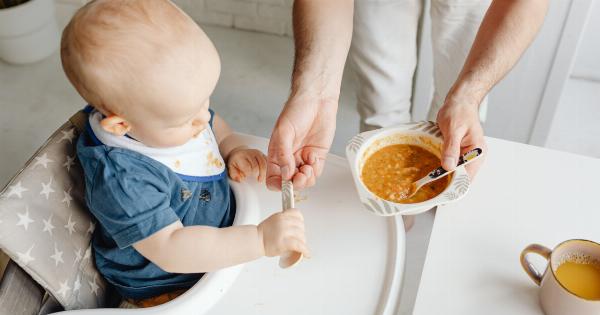Allergies are a common health concern that affect many individuals across the globe. As a mother, it is natural to worry about the well-being of your child and take proactive measures to protect them.
In this article, we will explore various strategies and precautions that mothers can take to safeguard their children against allergies.
Understanding Allergies
Before diving into preventative measures, it is crucial to have a basic understanding of allergies. Allergies occur when the immune system overreacts to certain substances, known as allergens.
Common allergens include pollen, dust mites, pet dander, certain foods, and insect bites.
An allergic reaction can manifest in various ways, such as sneezing, itching, hives, nasal congestion, or even a severe allergic response known as anaphylaxis.
Allergies can be hereditary, meaning that if you or your partner have allergies, there is an increased likelihood that your child may develop them as well.
Preventing Allergies
While it is not always possible to completely prevent allergies, there are several steps you can take to reduce the risk and severity of allergic reactions in your child:.
1. Breastfeeding:
Studies have shown that breastfeeding can help protect infants against allergies. Breast milk contains essential nutrients and antibodies that support the development of a strong immune system, reducing the likelihood of allergies in babies.
2. Introduce Solid Foods Carefully:
When it is time to introduce solid foods to your baby, it is advisable to do so gradually and carefully. Start with simple foods and monitor for any allergic reactions.
Common food allergens like peanuts, eggs, and shellfish should be introduced cautiously, following your pediatrician’s guidance.
3. Keep Indoor Air Clean:
Poor indoor air quality can worsen allergies, especially if your child is sensitive to common allergens like dust mites or pet dander.
Ensure proper ventilation in your home, regularly clean and vacuum to reduce allergen build-up, and consider using air purifiers or filters to improve the air quality indoors.
4. Minimize Exposure to Outdoor Allergens:
During allergy seasons, it is essential to minimize your child’s exposure to outdoor allergens like pollen and mold spores.
Keep windows closed, use air conditioning instead of fans, and encourage your child to wash their hands and change clothes after spending time outside.
5. Use Hypoallergenic Products:
Switching to hypoallergenic products can help reduce the contact of potential allergens with your child’s skin. Opt for fragrance-free soaps, detergents, and skincare products that are specifically formulated for sensitive skin.
6. Maintain a Clean and Dust-free Bedroom:
Since we spend a significant amount of time in our bedrooms, it is crucial to create an allergen-free environment. Use allergen-proof covers for pillows and mattresses, wash bedding frequently in hot water, and keep stuffed toys to a minimum.
Regularly cleaning and dusting the bedroom is also essential.
7. Pet Allergies:
If your family has pets, it is important to be aware of potential pet allergies. Some individuals are allergic to the dander or saliva of certain animals.
If your child develops symptoms like sneezing or nasal congestion around pets, consider consulting an allergist to identify the specific allergen.
8. Be Mindful of Medications:
When allergies strike, it may be tempting to reach for over-the-counter medications. However, it is crucial to consult a healthcare professional before giving any medication, especially to young children.
They can guide you on suitable allergy medications and ensure safe usage.
9. Regularly Clean and Vacuum:
To control allergens in your home, it is important to establish a regular cleaning routine. Vacuum carpets and rugs, dust surfaces, and mop floors regularly.
This helps minimize the presence of common allergens like dust mites, mold spores, and pet dander.
10. Know the Emergency Plan:
Despite all precautions, allergic reactions can sometimes occur. As a mother, it is crucial to have an emergency plan in place.
Educate yourself on the signs of anaphylaxis, know how to use an epinephrine auto-injector if prescribed, and ensure that your child’s school or caregivers are aware of their allergies and emergency procedures.
Conclusion
As a mother, you play a vital role in safeguarding your child against allergies. By following these preventative measures and taking necessary precautions, you can reduce the likelihood and severity of allergic reactions in your child’s life.
Remember to consult with healthcare professionals for personalized advice, especially if your child has pre-existing allergies or shows signs of allergic reactions. With a proactive and informed approach, you can help create a healthier and allergen-resistant environment for your child.




























